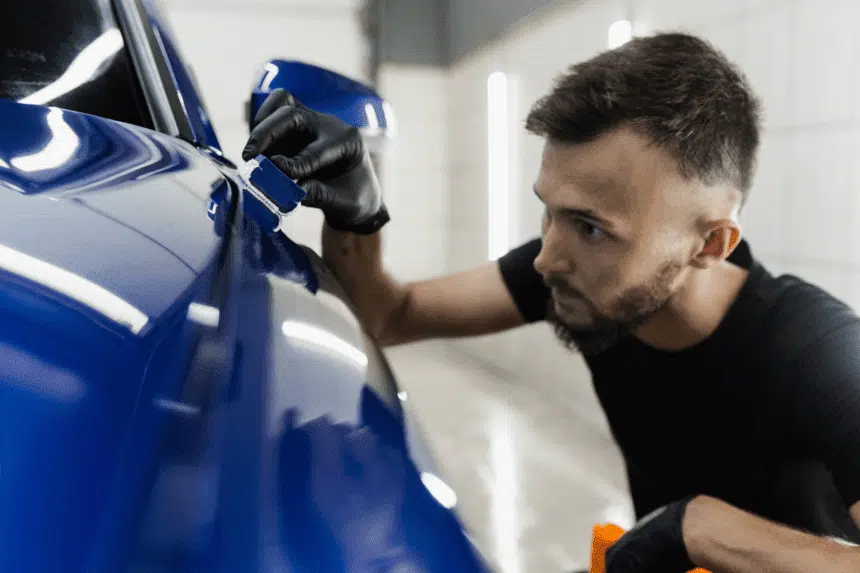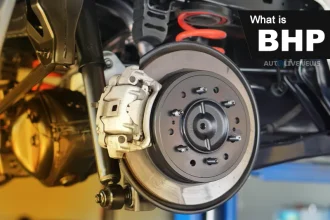Your car is more than just a mode of transportation; it’s an investment and a reflection of your personal style. Keeping it in pristine condition is essential for maintaining its value and aesthetics. One of the most common concerns for car owners is how to protect a car from scratches.
These seemingly minor imperfections can detract from your car’s appearance and, if ignored, can lead to more serious damage. In this comprehensive guide, we will delve into the best practices, tips, and tricks to show you how to protect a car from scratches and ensure that it remains in top condition for years to come.
Why is Protecting Your Car from Scratches Important?
Before we dive into the methods of protecting your car from scratches, it’s important to understand why this is crucial. Scratches can affect the look of your car and potentially lead to rust, especially if the scratch penetrates the paint layer and exposes the metal underneath. Rust can spread, weakening the structure of the vehicle and leading to costly repairs. Additionally, a well-maintained car with minimal scratches retains its resale value much better than one that appears neglected.
The Impact of Scratches on Your Car’s Value
When you decide to sell or trade in your car, its condition plays a significant role in determining its value. Cars with visible scratches or dents are typically appraised lower than those with a flawless finish. By knowing how to protect a car from scratches, you can maintain your car’s value over time.
Common Causes of Car Scratches
Understanding the common causes of car scratches is the first step in preventing them. Here are some of the most frequent culprits:
1. Improper Washing Techniques
Washing your car is essential for maintaining its appearance, but if done incorrectly, it can lead to scratches. Using harsh brushes, dirty sponges, or abrasive cleaning products can cause fine scratches on the paint surface.
2. Environmental Factors
Bird droppings, tree sap, and road debris can all contribute to scratches on your car’s paint. These substances can be acidic or hard, and when not removed promptly, they can etch into the paint.
3. Parking Lot Dings
Parking lots are notorious for causing minor scratches and dents. Whether it’s a shopping cart, another car, or even a careless pedestrian, your car is at risk every time you park in a crowded area.
4. Improper Drying
Drying your car with the wrong materials, such as a rough towel or a cloth that has picked up dirt, can create fine scratches. Additionally, letting your car air dry can lead to water spots, which can etch into the paint over time.
5. Polishing Mistakes
While polishing is great for maintaining your car’s shine, doing it incorrectly can lead to swirl marks and scratches. Using the wrong type of polish or an improper technique can damage the paint.
Also read: Tips to Improve Car Mileage!
How to Protect a Car from Scratches: Best Practices
Now that we understand the causes of car scratches, let’s explore how to protect a car from scratches effectively. Here are 10 ways to protect a car from scratches:
1. Use the Right Washing Techniques
Washing your car properly is one of the most effective ways to prevent car scratches. Here’s how to wash a car in the right way:
- Two-Bucket Method: Use one bucket for soapy water and another for rinsing your sponge or wash mitt. This prevents dirt from being reintroduced to the car’s surface.
- Microfiber Wash Mitt: Always use a high-quality microfiber wash mitt instead of a sponge or brush. Microfiber is gentle on your car’s paint and helps to lift dirt away without scratching.
- Gentle Car Shampoo: Use a pH-balanced car shampoo specifically designed for automotive paint. Avoid household detergents, as they can be too harsh.
- Wash in the Shade: Washing your car in direct sunlight can cause the soap to dry too quickly, leading to water spots and potential scratches. Wash your car in a shaded area to keep the surface cool and easy to work with.
2. Invest in a Car Cover
A car cover is a simple yet effective way to protect your car from scratches. It shields your vehicle from environmental factors like bird droppings, tree sap, and UV rays. When choosing a car cover, ensure it is made of soft, breathable material that won’t scratch the paint when you put it on or take it off.
3. Apply Paint Protection Film (PPF)
Paint Protection Film (PPF) is a transparent, durable film applied to the car’s exterior. It acts as a barrier against scratches, chips, and minor abrasions. PPF is particularly effective on high-impact areas like the front bumper, hood, and side mirrors. It’s a long-term investment that can keep your car looking new.
4. Use Ceramic Coatings
Ceramic coatings provide a protective layer over your car’s paint, making it more resistant to scratches and environmental damage. The coating bonds with the paint at a molecular level, creating a hydrophobic surface that repels water, dirt, and other contaminants. This not only reduces the risk of scratches but also makes your car easier to clean.
5. Wax Your Car Regularly
Car waxing creates a sacrificial layer on top of the paint. This layer takes the brunt of minor scratches and abrasions, protecting the underlying paint. Aim to wax your car every three months, or more frequently if you live in an area with harsh weather conditions.
6. Park Wisely
Where you park your car can significantly affect its likelihood of getting scratched. Follow these tips:
- Avoid Tight Spaces: Parking in narrow spots increases the risk of door dings and scratches. Opt for parking spaces with plenty of room on both sides.
- Park Away from Other Cars: If possible, park in areas with fewer cars around. This reduces the chance of someone opening their door into your car.
- Choose Covered Parking: Whenever possible, park in a garage or under a carport. This protects your car from environmental factors that can cause scratches.
7. Careful Loading and Unloading
When loading or unloading items from your car’s boot, be mindful of the surfaces. Avoid dragging bags, boxes, or other objects across the paint. Consider using protective mats or blankets if you need to transport items that could potentially scratch the car.
8. Use Door Edge Guards
Door edge guards are small strips of protective material that attach to the edges of your car doors. They prevent the edges from getting scratched or chipped when you open the doors in tight spaces. These guards are inexpensive and easy to install, making them a simple way to protect your car.
9. Install Mud Flaps
Mud flaps are often overlooked but can be quite effective in protecting your car from scratches. They prevent rocks, debris, and mud from being kicked up by your tires, which can scratch the paint. Installing mud flaps is especially beneficial if you frequently drive on gravel roads or in areas with loose road surfaces.
10. Be Cautious with Automatic Car Washes
Automatic car washes are convenient, but they can be harsh on your car’s paint. The brushes used in these washes may not be properly maintained, and they can pick up dirt and debris from other vehicles, which can scratch your car. If you must use an automatic car wash, opt for a touchless one that relies on high-pressure water and soap rather than brushes.
Also read: What is a Car Facelift?
DIY Scratch Prevention Tips
While the methods mentioned above are great for long-term scratch prevention, there are also some quick and easy DIY tips you can use. Learn how to protect a car from scratches with the following tips:
1. Keep a Quick Detailer in Your Car
A quick detailer spray is a handy product to keep in your car. It can be used to remove light dust, fingerprints, and bird droppings before they have a chance to cause scratches. Always use a clean microfiber cloth with the detailer to avoid scratching the surface.
2. Use a Car Duster
If your car is frequently exposed to dust, consider using a car duster. A car duster is a soft, gentle tool that removes dust without scratching the paint. Use it lightly, and make sure the duster is clean before each use.
3. Touch-Up Paint
For minor scratches, using touch-up paint can help prevent further damage. Touch-up paint comes in small bottles and is matched to your car’s color. Applying it to scratches can protect the underlying metal from rust and keep the scratch from worsening.
4. Protective Vinyl Wraps
Vinyl wraps are another way to protect your car’s paint. These wraps are available in various colors and finishes, allowing you to change the look of your car while also protecting it from scratches. The vinyl acts as a protective layer, absorbing minor scratches and abrasions.
Also read: The Most Expensive Benz Ever
How to Handle Existing Scratches
Even with the best precautions, scratches can still happen. Knowing how to address them promptly can prevent them from worsening. Here’s how to protect a car from scratches of different types:
1. Surface Scratches
Surface scratches are the most common and usually the least severe. These scratches only affect the clear coat and can often be removed with a good polishing compound.
- Polishing: Apply a small amount of polishing compound to a microfiber cloth and gently rub it over the scratch in a circular motion. Continue until the scratch is no longer visible.
- Buffing: After polishing, buff the area with a clean cloth to restore the shine.
2. Deep Scratches
Deep scratches penetrate the clear coat and sometimes the paint layer itself. These scratches require more intensive repair.
- Touch-Up Paint: For deep scratches, apply touch-up paint that matches your car’s color. Use a fine brush to fill in the scratch, then let it dry completely.
- Clear Coat Application: After the touch-up paint has dried, apply a clear coat to protect the area. Once the clear coat is dry, polish and buff the area to blend it with the surrounding paint.
3. Professional Repair
If a scratch is too deep or extensive for a DIY fix, it’s best to consult a professional. Auto body shops have the tools and expertise to repair deep scratches and restore your car’s finish to its original condition.
Also read: Meet the Fastest Car in the World
Conclusion:
Protecting your car from scratches is an ongoing process that requires attention to detail and the use of proper techniques. By understanding how to protect a car from scratches and implementing the strategies discussed in this guide, you can keep your vehicle looking its best for years to come. Whether it’s through careful washing, using protective products, or being mindful of where you park, every effort you make will help preserve your car’s appearance and value. Remember, a well-maintained car not only looks great but also reflects the care and pride you take in your investment.
Frequently Asked Questions:
How often should I wash my car to prevent scratches?
Wash your car every two weeks to prevent the buildup of dirt and debris that can cause scratches. If you drive in harsh conditions where your car is exposed to contaminants, you may need to wash it more frequently.
Is waxing my car enough to protect it from scratches?
Waxing your car provides a protective layer that can help prevent minor scratches, but it’s not a foolproof solution. Combine waxing with other methods like using a car cover, applying PPF, or ceramic coatings.
Can automatic car washes damage my car’s paint?
Yes, some automatic car washes can cause scratches. Learn how to wash a car properly, or opt for touchless car washes that don’t use brushes that come into direct contact with your car’s paint.
What should I do if I find a scratch on my car?
For surface scratches, you can try polishing it out yourself. For deeper scratches, consider using touch-up paint or consulting a professional for repair.
Are ceramic coatings worth the investment?
Ceramic coatings are worth it if you’re looking for long-term protection against scratches, UV rays, and environmental contaminants. The durable, hydrophobic layer makes your car easier to clean.
How can I protect my car from scratches when parking in public areas?
To protect your car from scratches, park in less crowded spots, avoid parking next to larger vehicles, and use door edge guards. Choose covered parking to shield your car from environmental factors.
Is it necessary to use a microfiber cloth for cleaning my car?
Yes, microfiber cloths are highly recommended for cleaning your car because they are soft and designed to lift dirt away from the surface without causing scratches. Avoid regular towels or sponges, which can be abrasive.
What is PPF? Can it be applied to the entire car?
PPF or paint protection film can be applied to the entire car but is commonly applied to high-impact areas like the bumper, hood, and side mirrors. Full-body application is more protective but costs more.















